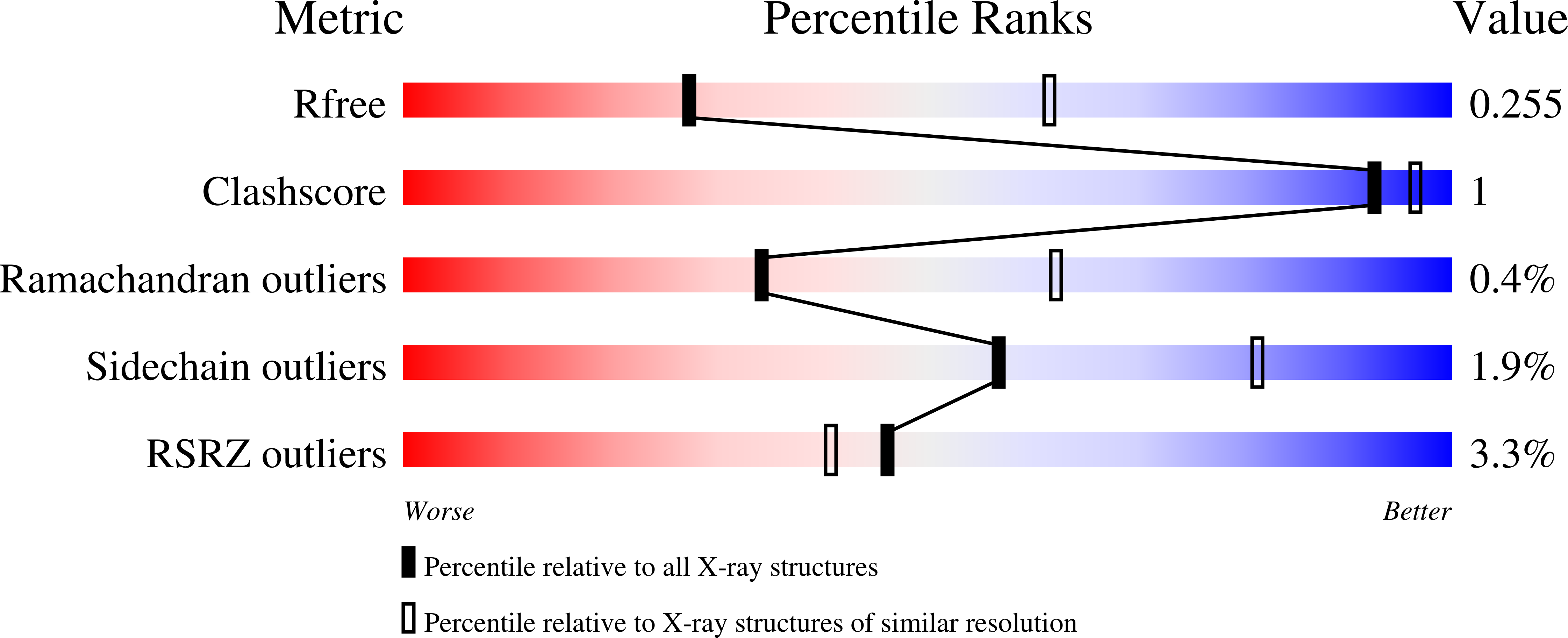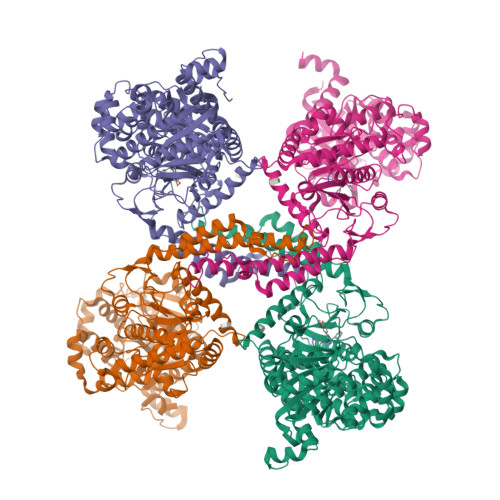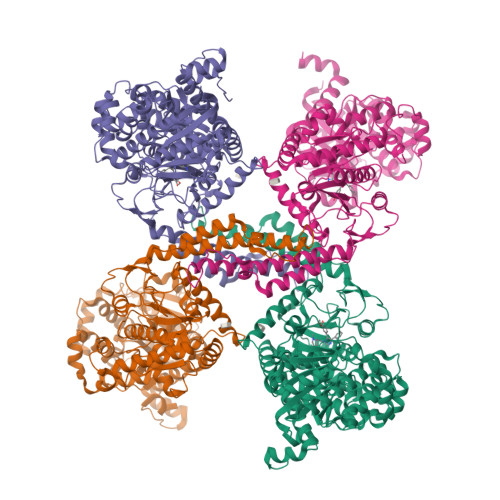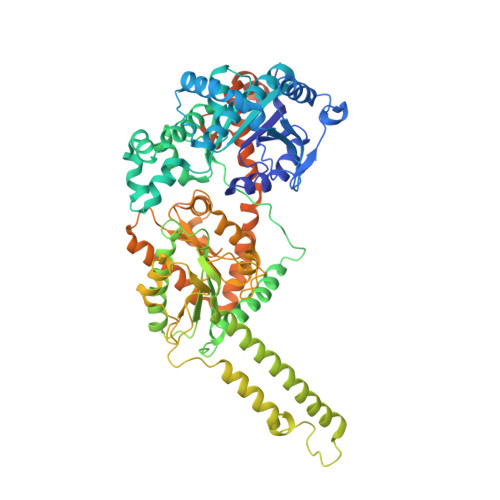Discovery and Development of Small-Molecule Inhibitors of Glycogen Synthase.
Tang, B., Frasinyuk, M.S., Chikwana, V.M., Mahalingan, K.K., Morgan, C.A., Segvich, D.M., Bondarenko, S.P., Mrug, G.P., Wyrebek, P., Watt, D.S., DePaoli-Roach, A.A., Roach, P.J., Hurley, T.D.(2020) J Med Chem 63: 3538-3551
- PubMed: 32134266
- DOI: https://doi.org/10.1021/acs.jmedchem.9b01851
- Primary Citation of Related Structures:
6U77 - PubMed Abstract:
The overaccumulation of glycogen appears as a hallmark in various glycogen storage diseases (GSDs), including Pompe, Cori, Andersen, and Lafora disease. Accumulating evidence suggests that suppression of glycogen accumulation represents a potential therapeutic approach for treating these GSDs. Using a fluorescence polarization assay designed to screen for inhibitors of the key glycogen synthetic enzyme, glycogen synthase (GS), we identified a substituted imidazole, ( rac )-2-methoxy-4-(1-(2-(1-methylpyrrolidin-2-yl)ethyl)-4-phenyl-1 H -imidazol-5-yl)phenol ( H23 ), as a first-in-class inhibitor for yeast GS 2 (yGsy2p). Data from X-ray crystallography at 2.85 Å, as well as kinetic data, revealed that H23 bound within the uridine diphosphate glucose binding pocket of yGsy2p. The high conservation of residues between human and yeast GS in direct contact with H23 informed the development of around 500 H23 analogs. These analogs produced a structure-activity relationship profile that led to the identification of a substituted pyrazole, 4-(4-(4-hydroxyphenyl)-3-(trifluoromethyl)-1 H -pyrazol-5-yl)pyrogallol, with a 300-fold improved potency against human GS. These substituted pyrazoles possess a promising scaffold for drug development efforts targeting GS activity in GSDs associated with excess glycogen accumulation.
Organizational Affiliation:
Department of Biochemistry and Molecular Biology, Indiana University School of Medicine, Indianapolis 46202, Indiana, United States.


















